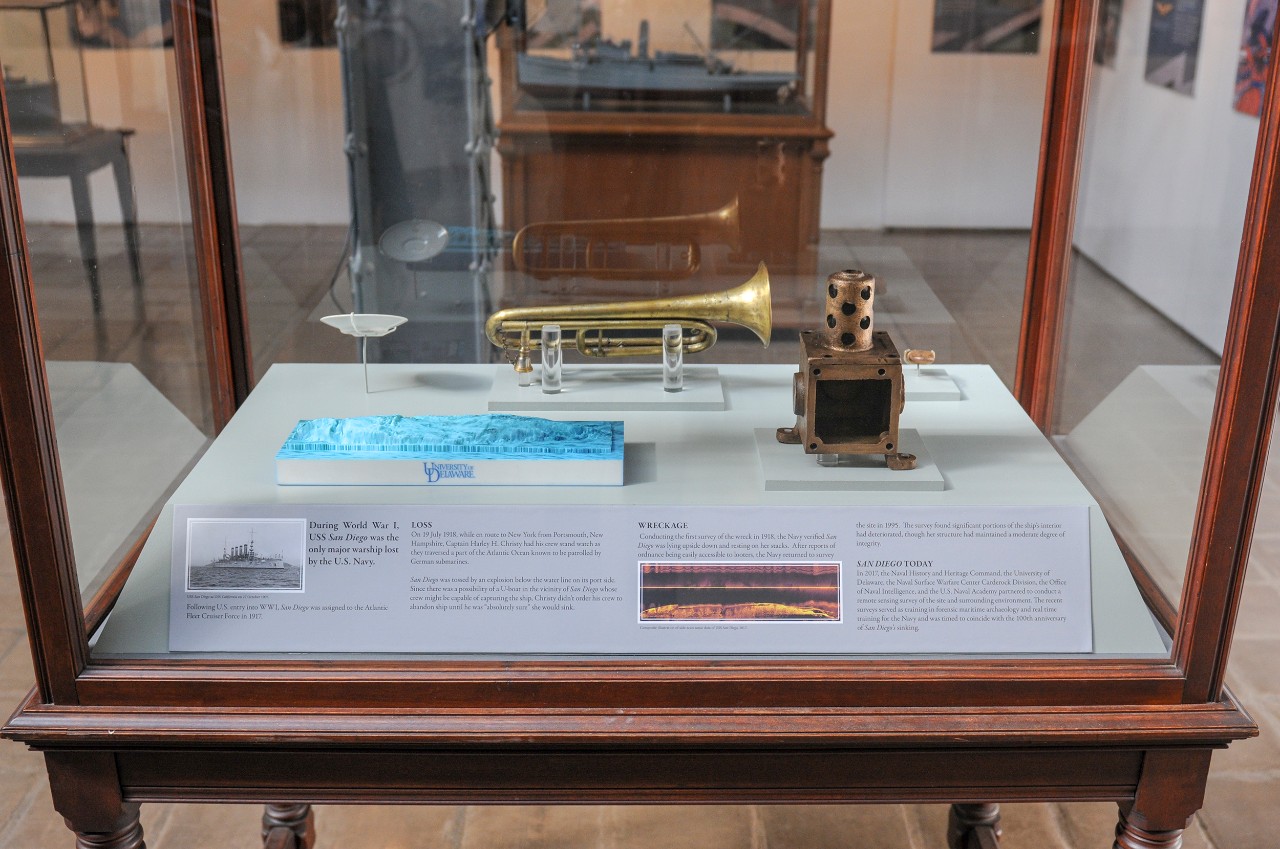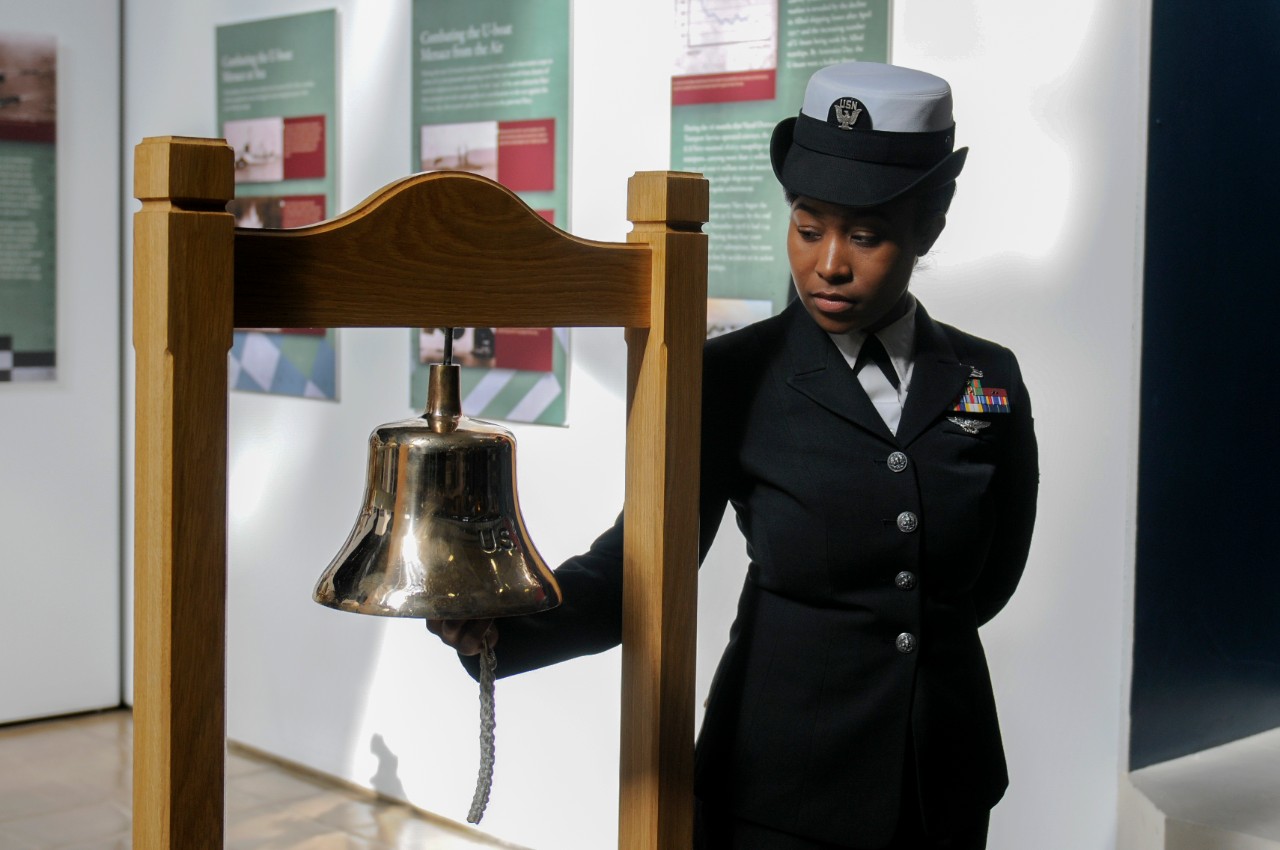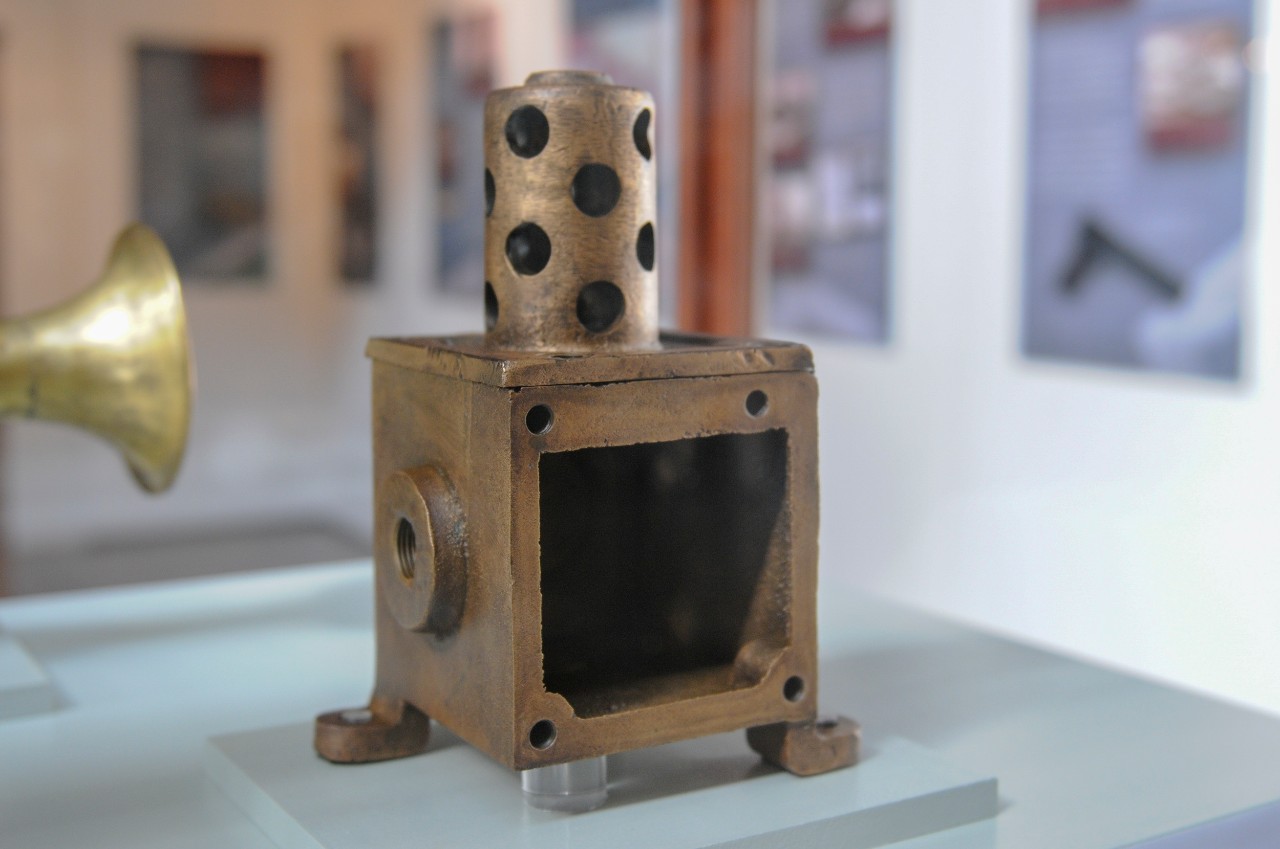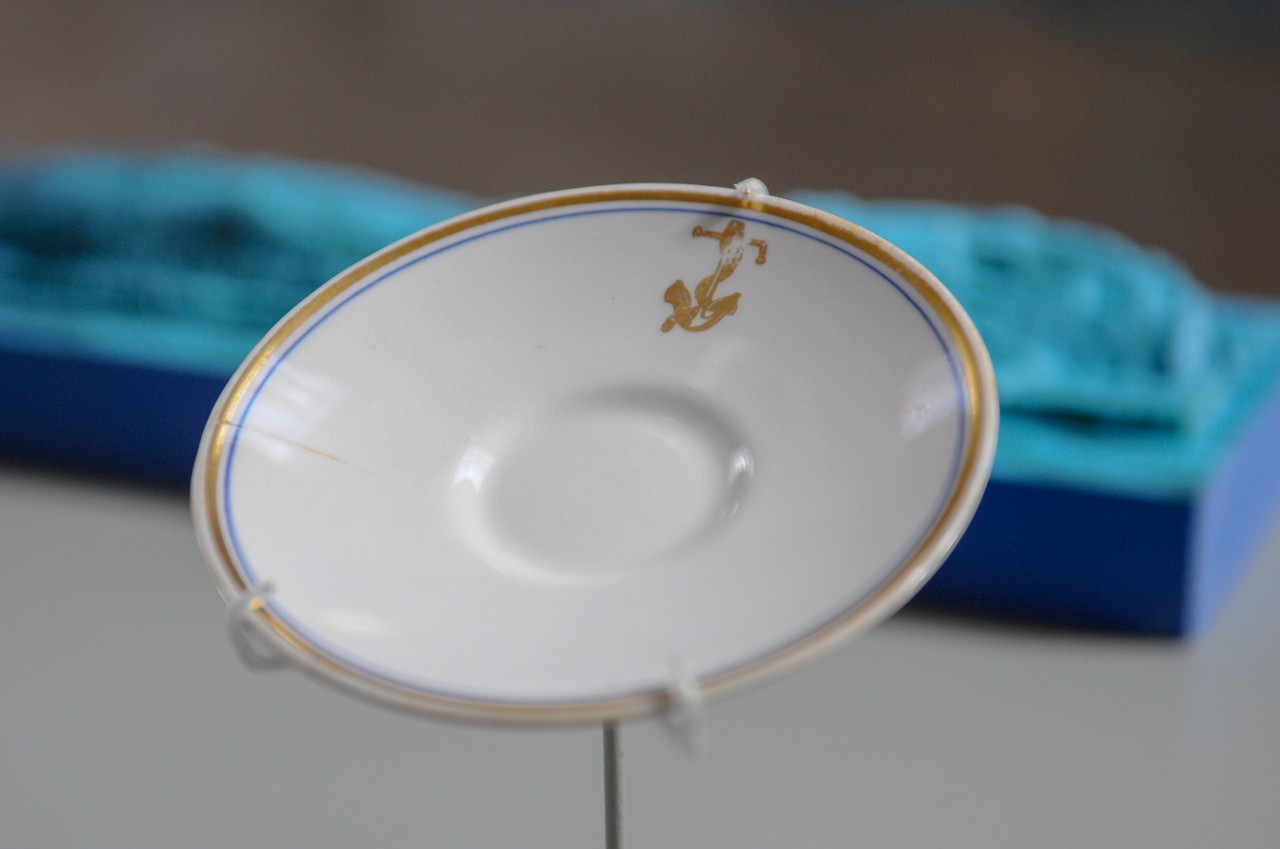Naval History and Heritage Command (NHHC) held a Bell Ringing ceremony launching the USS San Diego (ACR 6) exhibit at the National Museum of the U.S. Navy, Nov. 8.

On July 18, 1918, USS San Diego (ACR 6) set off for New York from Portsmouth, New Hampshire. German U-boats were known to patrol the waters around Long Island so a zigzag course was set.
On the morning of July 19, 1918, Captain Harley H. Christy ensured crew members had taken up watch positions. At approximately 11:05 a.m., an explosion occurred off San Diego’s port side below the water line, immediately causing the ship to list to port. Christy believed the explosion was the result of a German mine or torpedo.
Once both engines became inoperable, and with reports that the radio compartment was taking on water, Christy ordered the crew to abandon ship. Six Sailors of the original crew of 1183 were lost during the attack and aftermath.
“As the only major warship lost by the United States during World War I, San Diego remains historically significant,” said Rear Admiral Samuel Cox, U.S. Navy (Ret.), Director of Naval History and Heritage Command. “The site serves as a stark reminder of how close enemy action came to the American coast during the war and serves as the final resting place of the six Sailors who lost their lives in the service of their country. We owe it to those Sailors and their families to protect this site as best we can.”

The Navy conducted the first survey of the wreck in 1918. The survey verified the ship was lying upside down and resting on the stacks. Despite salvage contracts being awarded in 1921 and 1957, work wasn’t completed. During this period and subsequent decades, artifacts were removed from the site, including both propellers, which were removed for their scrap metal value.
The unauthorized removal of weapons from the site in 1995 led to the first Naval History and Heritage Command’s survey of the site.
The site was placed on the National Register of Historic Place in 1998 and falls under the 2004 Sunken Military Craft Act. The Act prohibits unauthorized disturbance of sunken military craft—both ship and aircraft—but authorizes the Secretary of the Navy to issue permits under federal regulations (32 CFR 767) allowing for the conduct of scientific research for archaeological, historical, or educational purposes. The permit program is managed by NHHC’s Underwater Archaeology Branch.
“In 2017, NHHC’s Underwater Archeology branch and partners documented and assessed the condition of the site and surrounding environment,” said Heather Brown, underwater archaeologist at NHHC. “The recent surveys help plan for future missions and serve as training in forensic maritime archeology, real-time training for the Navy, and was timed to coincide with the 100th anniversary of San Diego’s sinking.”
NHHC continues to manage the site as a sunken military craft, a war grave, and part of the U.S. Navy’s overall cultural resource management program. The command’s Underwater Archaeology & Conservation Laboratory curates a number of artifacts that were recovered without authorization and were later returned to Navy custody in recent years.

“The expertise of the conservators on staff is vital to the stabilization and long-term preservation of these fragile artifacts,” said Shanna Daniel, archaeological conservator at NHHC. “Conservation plays an integral part in underwater archaeology as these artifacts require special care and vary in condition depending on the environment.”
There are 229 artifacts within the San Diego collection under the management of NHHC. Artifacts displayed at the exhibit include a saucer, a bugle, a possible heat sensor, and a padlock. The M1892 bugle was an item used aboard ships to issue commands intended for the entire ship’s company. The saucer was manufactured in 1917 for a demitasse-style coffee cup.
“The San Diego collection provides an understanding into the workings of an armored cruiser during WWI, as well as a look into the daily lives of the Sailors aboard the ship,” said Daniel. “It also shows how the role of technological inventions such as electricity helped to modernize the Navy and become the powerhouse it is known for today.”

As the nations involved in World War I commemorate its centennial, the survey and commemoration of the loss of USS San Diego serves as a reminder of how close the war actually came to the shores of the United States and the role of the U.S. Navy in protecting our nation, then and today.
The Naval History and Heritage Command, located at the Washington Navy Yard, is responsible for the preservation, analysis, and dissemination of U.S. naval history and heritage. It provides the knowledge foundation for the Navy by maintaining historically relevant resources and products that reflect the Navy's unique and enduring contributions through our nation's history, and supports the fleet by assisting with and delivering professional research, analysis, and interpretive services. NHHC is composed of many activities including the Navy Department Library, the Navy Operational Archives, the Navy art and artifact collections, underwater archeology, Navy histories, ten museums, USS Constitution repair facility, and the historic ship Nautilus.


